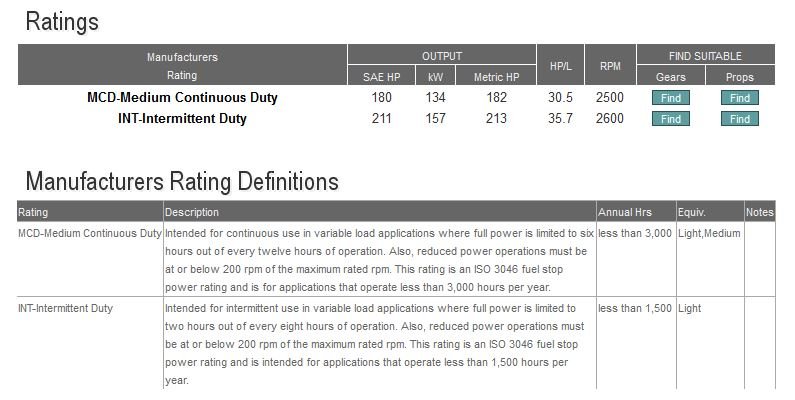My question really should have been is it advisable to run at max rpm for other than short test period? Is it safe for the engine to cruise at 2300 rpm not at WOT?
The answer to your question is NO, unless you can prove your engine can make 2600-2700 RPM at WOT.
More from the SBMAR.com site:
Mechanical engines, due to the nature of the mechanical, non-isochronous governors, must be propped solely on the attainable engine speed at full throttle, steady state conditions. Unlike electronic engines governors which have a precise, predetermined, and consistent governor set point; mechanical engines progressively limit fueling to limit engine speed (known as the high speed governor break point). The high speed governor break point is defined as the speed at which the governor begins to reduce torque below the rated power value, when operating at full throttle. The difference in engine speed between the governor break point and the maximum no-load operating speed (also known as high idle) is called droop. When propping a mechanical engine, the full throttle engine speed must be above the rated speed of the engine and should be below the point where the governor break point begins. Propping beyond the governor break point will result in a linear and progressive reduction in available engine power output as speed is increased to high idle. The governor break point on mechanical CMD engine is typically 100 to 125 rpm above the rated speed. Once an engine reaches the governor break point, it will advance in speed, but power will be reduced. Therefore, if a vessel is sufficiently under-propped so that an engine does not reach 100 percent load before the governor break point, the engine will be limited from producing all its available power. In some applications, it may be necessary to prop the vessel so that the engines are operating beyond the governor break point and not at 100 percent load at full throttle. Typically this applies to production vessels, where the first hull has been loaded to a heavy displacement, tested to comply with reaching rated speed, and then unloaded to conclude what subsequent sister vessels should be propped to when tested light. The resulting prop demand at a light condition may enter the range where the engine speed exceeds the governor break point and load is less than 100 percent.
Note: CMD mechanical engines are designed to produce near constant power, increasing slightly from rated speed to the governor break point.
It is Cummins recommendation that the ideal propping point is to achieve 75 to 100 rpm over rated speed. This maximizes performance, efficiency, and durability of the engine. Figure 16-2 provides a sample engine performance curve for a mechanical engine overlaid with propeller demand curves that graphically depict the above.
Typical Target Propping RPMs for Cummins Mechanical Marine Diesels
Part BHP-MHP Minimum Rated RPM Min Propping Target RPM* Engine
DR6500-RX 210/220 2600 2700 220 Diamond
*Or 90% LOAD (or less) at minimum rated RPM.

